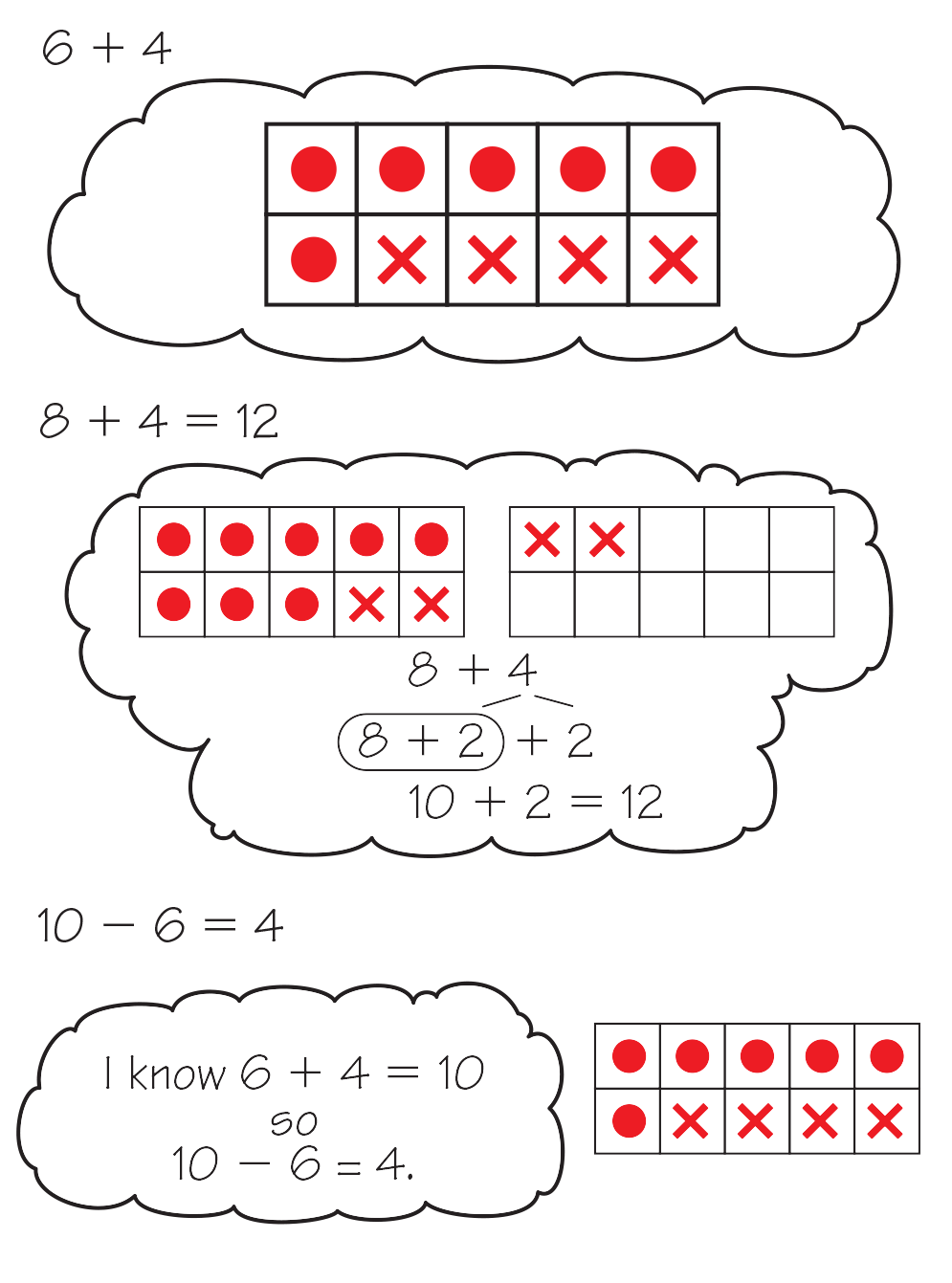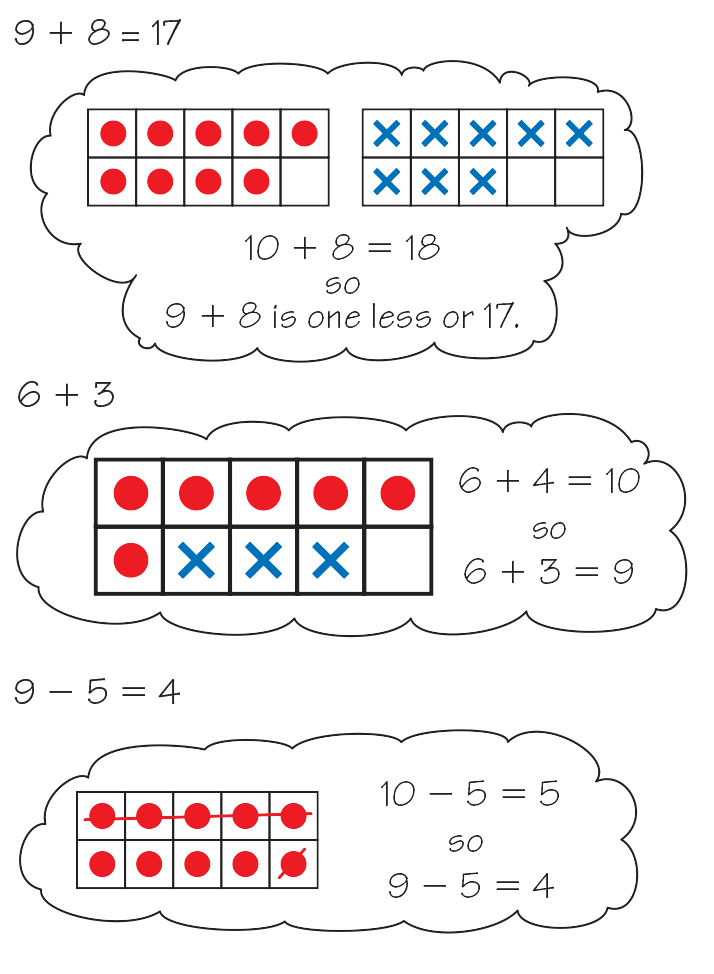|
|
Daily Practice and Problems |
Lesson |
Homework |
Assessment |
Student Book |
| Student Activity Book |
|
|
|
|
Teacher Resources |
Teacher Guide - digital |
|
|
|
|
Supplies for Students
20 connecting cubes
Materials for the Teacher
1 prepared set of Addition Cards for Larger Sums 1 and
2 from Lesson 1 (Teacher Guide)
See Materials Preparation.
Invented Strategies chart from Lesson 1
Display of Addition Strategies Menu for Small Numbers (Student Activity Book) Reference
Display of Addition Strategies Menu for Larger Numbers (Student Activity Book) Reference
sets of Ten Frame Cards 1–9 Master (Teacher Guide), 3 copies per set. See Materials Preparation.
copies of Near Doubles Match Board Master (Teacher Guide). See Materials Preparation.
prepared sets of the Near Doubles Cards Master (Teacher Guide). See Materials Preparation.
a few copies of Doubles, Doubles +1, Doubles −1 Spinners section from Lesson 4 (Student Activity Book)
Page 376
several copies of Doubles, Doubles +1, Doubles −1 Recording Sheet section from Lesson 4 (Student Activity
Book)
Page 377
Unit 12 Assessment Record
connecting cubes
clear plaster spinners or paper clips and pencils. See Materials Preparation.
chart paper
tape or glue
Materials Preparation
Prepare the Addition Cards for Larger Sums. Copy one set of the Addition Cards for Larger
Sums 1–2 Masters on brightly colored card stock or paper. Cut apart the cards.
Prepare Materials for Learning Centers. Students will rotate through four activities in this lesson. Make a sign
to identify each center activity. Decide how many students will visit a center at one time. Prepare the following
materials for each activity accordingly and place them in a learning center:
- Addition Problems: connecting cubes
- Move It to Make Ten: Copy and cut apart 3 copies of the Ten Frame Cards 1–9 Master for each pair of
students. Place each set of cards in an envelope.
- Near Doubles Match: Copy 1 Near Doubles Match Board Master and copy and cut apart 1 copy of the
Near Doubles Cards Master for each pair of students. Place the cards in an envelope.
- Doubles, Doubles +1, Doubles −1: Make a few copies of the Doubles, Doubles +1, Doubles −1
Spinners and make several copies of the recording sheet from the Student Activity Book in Lesson 4.
Provide a clear plastic spinner or a paper clip and a pencil.

















